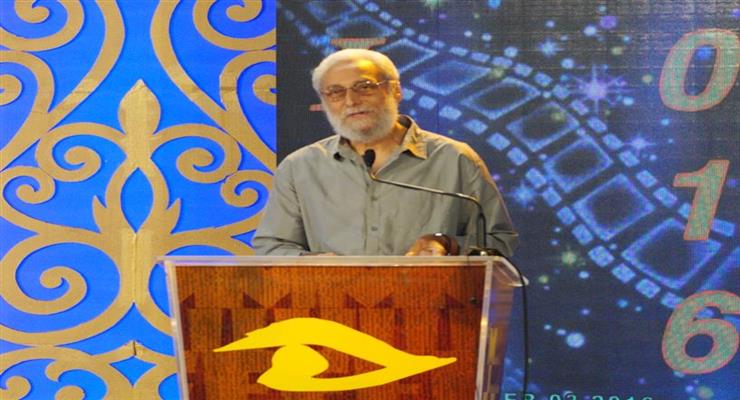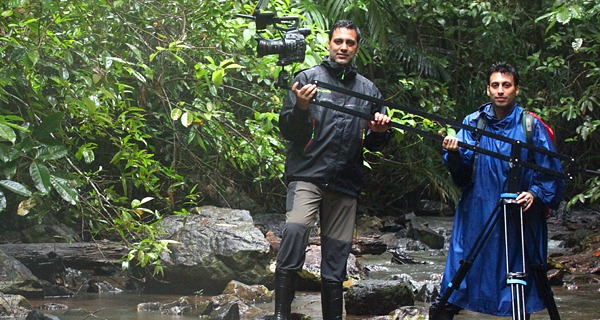Naresh Bedi – The man with the wild
Naresh Bedi, wildlife filmmaker was awarded the V. Shantaram lifetime achievement award at Mumbai International Film Festival. The man who has been shooting the wild since 45 years and more shares some of the thrilling moments and details about his journey so far.

Naresh Bedi at the Mumbai International Film Festival 2016
What’s your view on the Man-animal conflict?
Man-animal conflict has always existed. In fact it has increased over the years. We are slowly encroaching the forest areas. The problem lies with us, not with the animals. We are stopping elephants to move from one place to another, while making roads, while making electric fences, while digging trenches, while putting hurdles. Why are we so superior? Why don’t they have the right to move? So the problem is us, not them.
What is the view of western countries on this?
I think developed countries have already overcome this problem. They had planned well in advance about all these things. Their population is not exploding like ours. I’m pretty sure in another 5 years bears will go extinct here.
Many wildlife channels these days have very dramatic shows . Has it actually made it challenging for film-makers to put across films which require observation and patience?
I would say I’m an old timer. I like good films. Each sequence has to be well developed in which an audience can watch the behaviour of animals in the natural environment. It should be edited well and not dramatised. I think there’s a different type of audience these channels target. Some of them are trying to aim at younger generation. The generation which does not have time and patience to watch even a small good film. So it is certainly more challenging. We have seen the animal so closely, doing various things. We have even put the camera in their mouth. What else can we do? It is certainly challenging.
What platforms have you chosen for your work to reach the masses?
Mainly TV but now a days Youtube and other social platforms are used as a great medium. Discovery and National geographic are certainly there. BBC, PBS are also some channels. We have published DVDs too.
What inspired you to take up this field? How did the passion arise?
I was born in Haridwar. My whole family lived there. We had a tradition of going out on weekends to the forests. That created interest in our lives. Sitting with Gujjars, talking to them about their farms and animals, if any animal ate their cattle? did they spot a tiger? etc. That got me more interested. I remember seeing my first elephant when I was 8-9yrs old. I was alone coming after a trek. There were people walking and suddenly the elephant got up and started running. I got very scared and was sweating profusely.

Ajay Bedi and Vijay Bedi
How did your sons Ajay and Vijay bedi get associated with you and how do you work together as a team?
Ajay and Vijay both are very passionate about this. They are are currently working on frogs in India. They’ve made several documentaries and features on animals. Vijay’s contribution to the documentary film on the life of two endangered Himalaya’s Red Pandas called the Cherub of the Mist was immense (Both won the Green Oscars for this film). For the mating sequence he stayed in the Himalayas for 5 days till he finally got the sequence.
These days anyone can just pick up a camera, start shooting and call himself a filmmaker, do you think this is a positive development in the arena of film-making or is it hampering with the quality of filmmaking these days?
Both! There’s a lot of trash coming out and there are good films too. For example, you go to a forest, every jeep is loaded with cameras. They see something and they shoot it. The quality of the image depends not only on capturing something but on how you hold the camera, the angle, how you develop the sequence and the story behind it.
How to develop interest in kids these days for wildlife and film-making?
Exposure is very important. Along with the information the entertainment value is also important. You have to make it interesting, you have to sit with them and talk to them. I remember my father would narrate us wildlife stories and ask us to share what we saw on TV. I made sure I spent some time with my kids and that is how you create interest.
Government is talking about ‘ache din’ (good days) and smart cities, so naturally development will come in the way of environment. What can government do to not harm the environment and forests in the process of development?
Government should bring more areas under protection and add stringent laws. That’s the only thing. We have created sanctuaries and we need to protect them well. The only solution is to literally root it out.
– Kiran Dave


